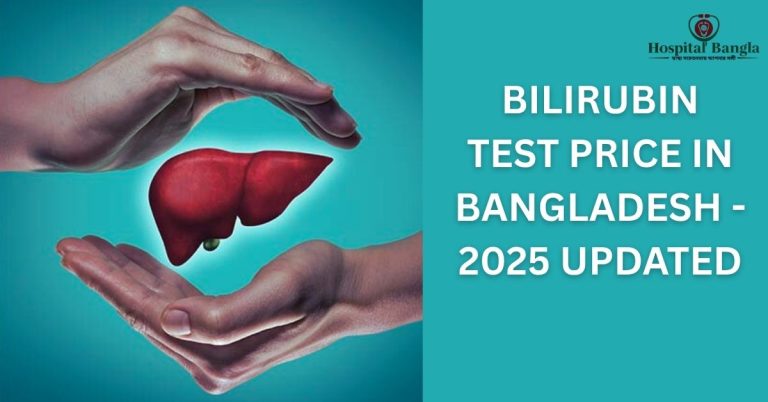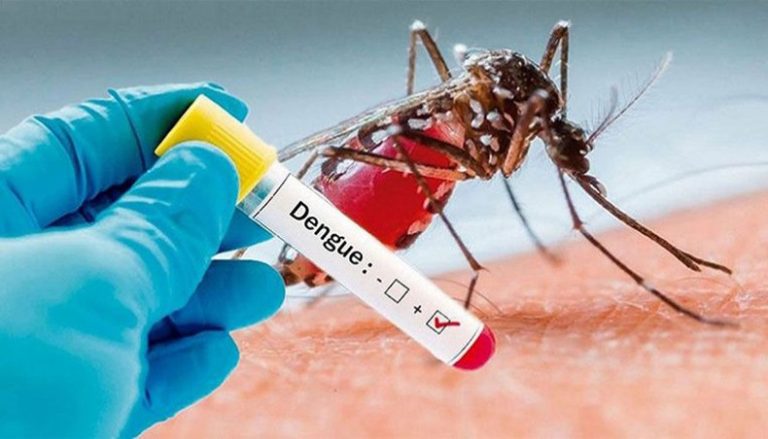ROP Screening Test Price in Bangladesh – 2025 Updated
The Retinopathy of Prematurity (ROP) Screening Test is a vital medical examination for premature infants to detect abnormal blood vessel growth in the retina, a condition known as Retinopathy of Prematurity (ROP). This test is crucial for early detection and timely treatment to prevent potential blindness in affected infants. Parents of premature babies, particularly those born before 34 weeks of gestation or with a birth weight less than 1500 grams, are advised to have their infants screened for ROP. The ROP Screening Test Price In Bangladesh varies depending on the healthcare facility. In private hospitals, such as Mazharul Haque BNSB Eye Hospital, the test typically costs around 1000 BDT (BNSB Eye Hospital). In government hospitals, the screening is often provided free of charge or at a nominal fee as part of neonatal care services.
What is a ROP Screening Test?
Retinopathy of Prematurity (ROP) is a potentially blinding eye disorder that primarily affects premature infants. It occurs when the blood vessels in the retina, the light-sensitive layer at the back of the eye, develop abnormally. The ROP Screening Test involves a detailed examination of the infant’s retina using an indirect ophthalmoscope, a specialized device that allows a pediatric ophthalmologist or trained retina specialist to view the retina clearly. The test measures the presence and severity of abnormal blood vessel growth, which is classified into stages (1 to 5) and zones based on the extent and location of the condition. Early detection through screening is critical, as untreated severe ROP can lead to retinal detachment and permanent vision loss. The test is also referred to as neonatal retinal screening or ROP examination. In Bangladesh, improved neonatal care has increased the survival of preterm infants, making ROP screening increasingly important (National ROP Guidelines).
Clinical Significance
- Early Detection: Identifies ROP before it progresses to severe stages, enabling timely interventions like laser therapy or cryotherapy.
- Risk Assessment: Helps doctors assess the risk of vision impairment in high-risk infants, such as those with low birth weight or prolonged oxygen therapy.
- Preventive Care: Regular screening ensures that any progression of ROP is monitored, reducing the risk of blindness.
Medical Conditions Requiring the Test
- Prematurity: Infants born before 34 weeks of gestation.
- Low Birth Weight: Babies weighing less than 1500 grams at birth.
- Oxygen Therapy: Infants who have received supplemental oxygen, which can contribute to abnormal retinal vessel growth.
- Other Risk Factors: Conditions like respiratory distress syndrome or infections that increase ROP risk.
When is a ROP Screening Test Recommended?
ROP screening is recommended for premature infants at high risk of developing the condition. The following criteria outline when the test is typically advised:
- Gestational Age: Infants born before 34 weeks of gestation.
- Birth Weight: Babies weighing less than 1500 grams.
- Oxygen Exposure: Infants who have required prolonged supplemental oxygen.
- Other Risk Factors: Conditions such as sepsis, anemia, or intraventricular hemorrhage.
Screening usually begins when the infant is 4-6 weeks old or at 31-33 weeks postmenstrual age, whichever comes first. The frequency of screenings depends on the initial findings and the infant’s risk factors, typically occurring every 1-2 weeks until the retina is fully vascularized or treatment is needed. Doctors use the results to diagnose the presence and stage of ROP, determining whether monitoring or immediate treatment, such as laser therapy, is necessary. In Bangladesh, facilities like Dhaka Shishu Hospital and BSMMU are key centers for ROP screening, ensuring early intervention to prevent vision loss (Dhaka Shishu Hospital).
Symptoms and Conditions
While ROP itself does not present visible symptoms in infants, the following conditions warrant screening:
- Premature birth or low birth weight.
- History of oxygen therapy or neonatal intensive care unit (NICU) admission.
- Other neonatal complications that increase ROP risk.
Diagnostic Use
- Screening: Identifies at-risk infants before symptoms develop.
- Diagnosis: Confirms the presence and severity of ROP.
- Monitoring: Tracks the progression of ROP to determine the need for treatment.
ROP Screening Test Preparation
Preparing for an ROP screening test is straightforward but requires attention to ensure the infant’s comfort and the accuracy of the examination. Here’s what parents need to know:
- Fasting Requirements: No fasting is required. Feeding the infant before the test can help keep them calm and comfortable during the procedure.
- Medications: No specific medications are known to affect ROP screening results. However, inform the doctor of any medications the infant is taking, particularly steroids, which may influence eye health.
- Sample Collection Process: The test involves dilating the infant’s pupils with eye drops to provide a clear view of the retina. A pediatric ophthalmologist uses an indirect ophthalmoscope to examine the retina for abnormal blood vessel growth. The procedure is non-invasive and typically performed at the bedside in the NICU or an outpatient clinic.
- Duration: The test usually takes 15-30 minutes, depending on the infant’s cooperation and the complexity of the examination.
Parents should ensure the infant is well-rested and fed to minimize discomfort during the procedure. The use of eye drops may cause temporary light sensitivity, but this is generally safe and resolves quickly.
ROP Screening Test Price List in Government Hospitals in Bangladesh
In government hospitals, ROP screening is often provided as part of neonatal care services, typically at no cost or a nominal fee. Below is a table listing major government hospitals in Bangladesh that offer ROP screening, based on their neonatal and ophthalmology services. Prices are approximate, and contacting the hospital directly is recommended for the most current information.
| Hospital Name | Location | ROP Screening Test Price (BDT) | Contact Number |
|---|---|---|---|
| Dhaka Shishu Hospital | Dhaka | Free | +880 2 55059051 |
| Bangabandhu Sheikh Mujib Medical University (BSMMU) | Dhaka | Free | +880 2 9551500 |
| Mymensingh Medical College Hospital | Mymensingh | Free | +880 91 67600 |
| Chittagong Medical College Hospital | Chittagong | Free | +880 31 2522510 |
| Rajshahi Medical College Hospital | Rajshahi | Free | +880 721 754100 |
| National Institute of Ophthalmology & Hospital | Dhaka | Free | +880 2 9122560 |
Note: Prices are approximate and may vary. Contact the hospital for the most current pricing as of 2025.
ROP Screening Test Price List in Private Hospitals in Bangladesh
Private hospitals in Bangladesh offer ROP screening Pian screening at varying prices, depending on the facility and services provided. Below is a table listing private hospitals and diagnostic centers that may offer ROP screening, with available pricing where known. For most facilities, contacting the hospital directly is necessary to confirm pricing.
| Hospital/Diagnostic Center | Location | ROP Screening Test Price (BDT) | Contact Number |
|---|---|---|---|
| Mazharul Haque BNSB Eye Hospital | Dhaka | 1000 | +880 2 9122560 |
| Bangladesh Eye Hospital | Dhaka | Contact hospital for details | +880 2 8628512 |
| Vision Eye Hospital | Dhaka | Contact hospital for details | +880 2 9142636 |
| Ispahani Islamia Eye Institute and Hospital | Dhaka | Contact hospital for details | +880 2 9122432 |
| Lions Eye Institute & Hospital | Dhaka | Contact hospital for details | +880 2 9142636 |
| Dhaka Eye Care Hospital | Dhaka | Contact hospital for details | +880 2 7914409 |
| Khidmah Eye Hospital | Dhaka | Contact hospital for details | +880 2 9142636 |
| Hikmah Eye Hospital | Dhaka | Contact hospital for details | +880 2 9142636 |
| Mojibunnessa Eye Hospital | Dhaka | Contact hospital for details | +880 2 8628512 |
| Popular Diagnostic Centre | Dhaka | Contact hospital for details | +880 9666 787801 |
Note: Prices are approximate and may vary. Contact the hospital for the most current pricing as of 2025.
Understanding ROP Screening Test Results
ROP screening test results are categorized based on the stage and severity of the condition, ranging from Stage 1 (mild) to Stage 5 (severe, indicating total retinal detachment). Normal results indicate no abnormal blood vessel growth, meaning the infant does not have ROP. Abnormal results show the presence of ROP, with the stage and zone determining the need for further monitoring or treatment. Factors that may affect results include:
- Gestational Age: Younger infants are at higher risk of severe ROP.
- Birth Weight: Lower birth weight increases ROP risk.
- Oxygen Therapy: Prolonged oxygen use can influence retinal development.
If ROP is detected, consult a pediatric ophthalmologist immediately to discuss monitoring or treatment options, such as laser therapy, to prevent vision loss. Regular follow-up screenings are essential to track the condition’s progression.
Frequently Asked Questions
How accurate is the ROP screening test?
The ROP screening test is highly accurate when performed by trained professionals using proper equipment. Regular follow-up screenings are recommended to ensure ongoing accuracy.
How long does it take to get the results of the ROP screening test?
Results are available immediately after the examination, as the ophthalmologist assesses the retina in real-time during the procedure.
Is ROP screening covered by insurance in Bangladesh?
Insurance coverage varies by provider. Contact your insurance company to confirm if ROP screening is included in your plan.
How often should ROP screening be done?
Screening frequency depends on the infant’s gestational age and initial findings, typically every 1-2 weeks until the retina is fully vascularized or treatment is required.
What is the difference between ROP screening and a regular eye exam?
ROP screening is a specialized examination for premature infants to detect Retinopathy of Prematurity, focusing on retinal blood vessel development, while regular eye exams assess general eye health in older children and adults.
Can ROP be cured?
ROP cannot be cured, but early detection and treatments like laser therapy or cryotherapy can prevent vision loss. The effectiveness depends on the stage and timely intervention.
Are there any risks associated with ROP screening?
The procedure is non-invasive and generally safe. The eye drops used for pupil dilation may cause temporary discomfort or light sensitivity, which resolves quickly.
Conclusion
The ROP Screening Test is a critical procedure for premature infants to detect and manage Retinopathy of Prematurity, protecting their vision and enhancing their quality of life. In Bangladesh, the ROP Screening Test Price In Bangladesh varies, with private hospitals like Mazharul Haque BNSB Eye Hospital charging around 1000 BDT, while government hospitals often provide it free as part of neonatal care (BNSB Eye Hospital). Comparing prices and understanding the test’s preparation and results can help parents make informed decisions. Consult your healthcare provider to schedule screenings and stay informed about ROP care advancements.







